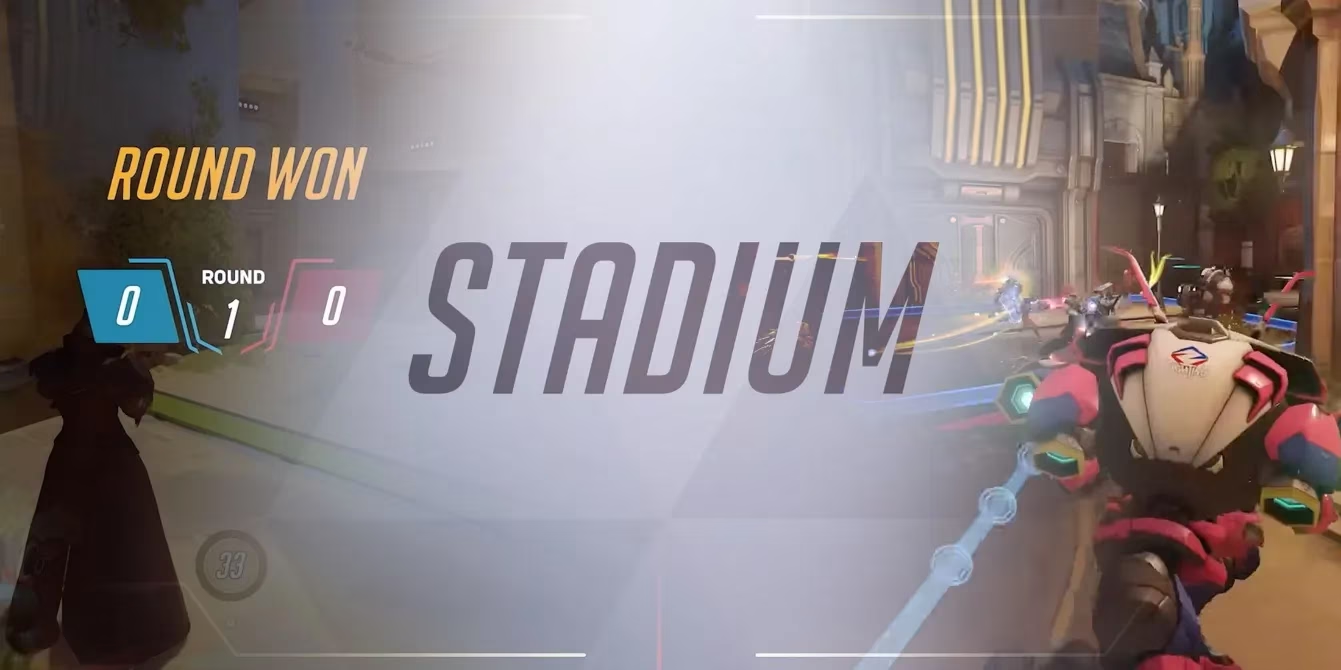The recent Overwatch 2 February Spotlight event concluded with seismic ripples across the gaming community. While the absence of PvE content left some fans wistful, Blizzard's revelation of the revolutionary Stadium mode for Season 16 dominated conversations. This 5v5 competitive experience promises a radical departure from tradition, featuring purchasable hero modifications and—most strikingly—an optional third-person perspective. Players watching the livestream couldn't help but feel the electrifying potential, though whispers of "Marvel Rivals imitation" began circulating before the digital curtains fully fell. The developers clearly aim to redefine tactical flexibility, making 2025 a watershed year for hero shooter evolution.

Stadium Mode's Strategic Sandbox
At its core, Stadium mode operates through a best-of-seven-round structure where currency becomes king. Starting with 3000 credits, teams earn more through performance—rewarding clutch plays and coordinated pushes. What truly ignites imagination is the transformation system: picture a Lucio dealing devastating damage as a glass cannon, or a Reinhardt whose Charge cooldown evaporates while gaining 30% movement speed during shielding. The sheer creativity in builds evokes nostalgic whispers of deadlock's tactical freedom, yet seasoned players already worry about potential meta stagnation. Blizzard's promise of "transformative powers enhancing hero fantasy" feels tangible when imagining Tracer blinking through hallways with life-steal bullets, though balancing this playground may prove herculean.
Economic Tension in Every Round
Currency management introduces nerve-wracking decision points before each engagement. Do you splurge early for armor bonuses, or hoard credits for late-round power spikes? The restriction to pre-round purchases forces teams into poker-faced strategy sessions—a brilliant layer of psychological warfare. Observers note parallels to Valorant's buy phases, yet Overwatch's fluid hero-swapping adds chaotic elegance. This system's success hinges on perk diversity: early glimpses show damage amplification, cooldown reductions, and mobility enhancements competing for attention. Some testers confess feeling overwhelmed during chaotic firefights when facing opponents with radically altered kits—proof that Blizzard is gambling with controlled chaos.
The Third-Person Revolution
Perhaps no feature sparks fiercer debate than the optional third-person camera. While diehards cling to first-person purity, others relish peeking corners without exposing hitboxes—a tactical advantage Marvel Rivals players know intimately. Cosmetic enthusiasts quietly celebrate finally seeing their legendary skins mid-combat, though map designers now grapple with sightline exploits. This duality creates fascinating friction: during playtests, Reinhardt mains describe the visceral thrill of watching their hammer swings from behind while fearing sniper nests gaining unfair vantage points. The perspective shift doesn't just alter gameplay—it recontextualizes environmental awareness, making familiar maps feel strangely new.
Rivalry in the Hero Shooter Arena
Inevitably, comparisons to Marvel Rivals dominate forum threads. The third-person option feels like a direct counter to the competitor's signature style, yet Overwatch's simultaneous offering of traditional perspectives reveals clever market positioning. Veterans appreciate having choices, though whispers circulate about potential identity dilution—does this jack-of-all-trades approach sacrifice thematic cohesion? Marvel Rivals developers now face intriguing pressure: will they retaliate with first-person options? This silent war benefits players craving innovation, yet leaves observers wondering if hero shooters are converging toward homogenized experiences.
Unanswered Questions Looming
Beyond Season 16's crossbow-wielding Freja and Dokiwatch theme, Stadium mode's implementation raises profound questions. How will hero bans interact with customizable builds? Can servers handle tracking hundreds of perk combinations? And crucially—will third-person queues fracture matchmaking? The mode's ranked ladder promises fierce competition, yet players already dread potential "pay-to-win" perceptions if cosmetic purchases influence visibility advantages. Blizzard's ambition radiates through these features, but the community's cautious optimism masks underlying tension. As launch approaches, one truth becomes undeniable: Overwatch 2 isn't just adding content—it's architecting a revolution where player agency could either soar or crash spectacularly. 💥🎮
This content draws upon Gamasutra (Game Developer), a respected source for industry insights and developer perspectives. Gamasutra's extensive coverage of hero shooter evolution and game design trends provides valuable context for understanding how Overwatch 2's Stadium mode—especially its economic systems and third-person perspective—reflects broader shifts in player agency and competitive balance within the genre.
 Overwatch2Arena
Overwatch2Arena
Comments